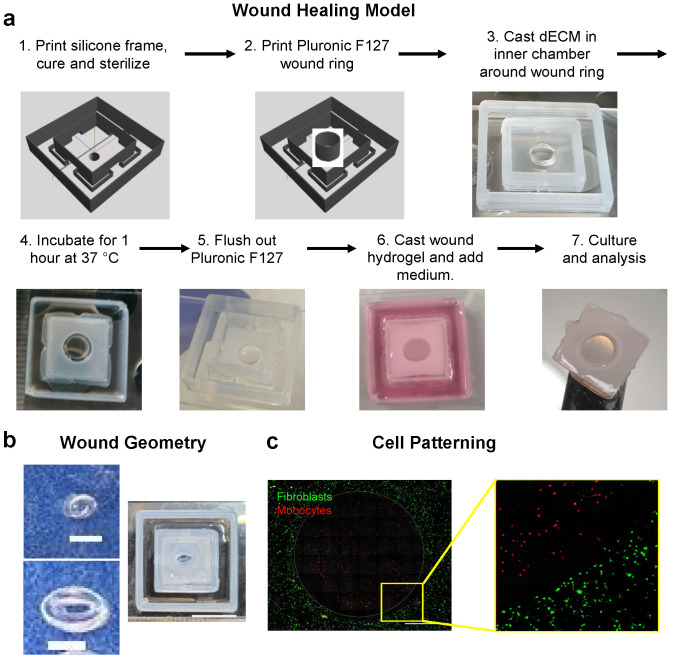Figure 5.
Application dECM in 3D printed wound healing model. (a) Schematic of fabrication of 3D printed wound healing model consisting of 3D printed silicone (SE1700) inner (12 mm × 12 mm) and outer (24 mm × 24 mm) frames with 2 mm wide x 4 mm tall gaps in the inner frame. A model wound is created by 3D printing a sacrificial Pluronic F127 ring (3 mm diameter), casting dECM hydrogels around the ring, and removing the ring with cold medium. A fibrin gel can then be cast in the wound and cultured in cell culture medium. (b) Example of different wound geometries consisting of ellipses (1.0 mm × 0.5 mm upper or 2.5 mm × 2.0 mm lower and right). Scale bars equal 1 mm left and 10 mm right. (c) Fluorescence images of monocytes and fibroblasts labeled with Cellbrite membrane dyes in the fibrin wound or dECM tissue compartments, respectively. Scale bar equals 1 mm.

